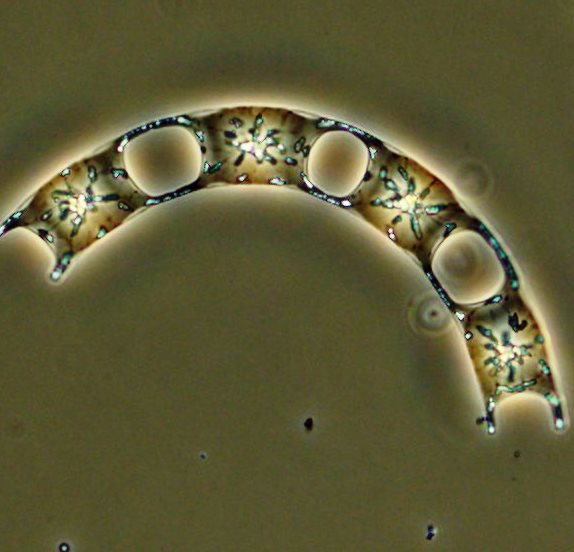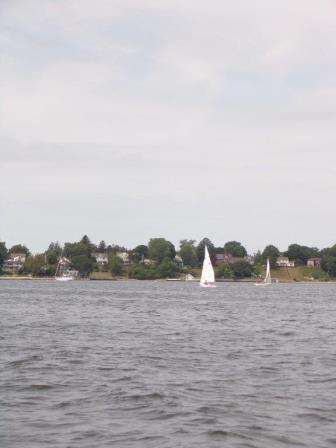Historical News
Water Column Profiles
Water column profiles were measured at six sites in the Providence and Seekonk Rivers on June 6, 2018. The days leading up to the survey had 0.84 inches of rainfall in the five days prior with 0.69 inches of that falling in the two days prior to sampling. Most sites exhibited a well-mixed water column, with minimal stratification observed.
Salinity in surface waters ranged from 22.7 psu at Pawtuxet Cove to 26.2 psu at Pomham Rocks. Salinity at depth ranged from 28.6 psu at Pawtuxet Cove and Point St. Bridge, to 31 psu at Conimicut Point. Surface temperatures ranged from 15.9°C at Pomham Rocks and India Point Park, to 16.4°C at Pawtuxet Cove. Temperatures at depth ranged from 13.7°C at India Point Park and Conimicut Point, to 15.3°C at Pawtuxet Cove.
Oxygen levels were variable this week, though remained above the hypoxia threshold of 2.9 mg/L. The minimum DO concentration was observed in the bottom waters of Edgewood Yacht Club, at 3.5 mg/L. Lastly, the maximum fluorescence, 8.6 mg/m3, was observed in the surface waters at Pawtuxet Cove.
Phytoplankton Sampling
Phytoplankton samples were collected at Bullock's Reach on June 27, 2018 and analyzed in the laboratory shortly after collection. Sondes data revealed the surface water temperature was 20.51oC, salinity was 28.44 psu, and chlorophyll a was 10.6 ug/L. The plankton tow net sample was filterable with a 20 micron mesh. The filtrate was a greenish brown color with a medium filter-ability time. The tow net sample was analyzed qualitatively for microorganisms using 100x phase contrast microscopy. The whole water sample was analyzed quantitatively under 200x phase contrast microscopy. A Hensen Stempel pipette was used to accurately deliver 1ml of sample to a Sedge-wick Rafter chamber. This analysis revealed a total of 3,005,000 cells per Liter. The most predominant phytoplankton was Dactyliosolen spp. at 2,600,000 cells/L. The flagellates were found at 168,000 cells/L and other representative genera include Leptocylindrus spp., Chaetoceros spp., and Thalassionema spp.
200x phase contrast image of a Eucampia spp.

Fixed Site Network
Phillipsdale
This week at Phillipsdale, data revealed overall good water quality, with no stratification observed. Over the course of the week there was very little rainfall totaling 0.20 inches on the 18th – 19th, with relatively low flow from the Blackstone River. Surface salinities decreased over the course of the week with an overall average of 17.4 ppt, a minimum of 8.8 ppt, and a maximum of 24.7 ppt. Bottom salinity was relatively stable and fluctuated with the tides over the course of the week and had an average of 22.4 ppt and a range 13.8 ppt – 26.1 ppt. Surface temperatures increased through the week by about 3oC, with an average surface temperatures of 22.1oC and a range of 18.4oC – 26.3oC; bottom temperatures increased slightly with a weekly average of 20.8oC and range of 18.0oC – 23.3oC. Surface chlorophyll increased over the course of the week and had a weekly average of 16.1 ug/L, and a daily average peak of about 26.0 ug/L. Dissolved oxygen (DO) for the week was good at the surface and fair at the bottom. Surface DO increased as compared to the previous week and averaged 8.3 mg/L and had a minimum of 3.5 mg/L. Dissolved oxygen in the bottom waters did not have any instances of hypoxia (below 2.9 mg/L) and had a weekly average of 5.0 mg/l and a minimum of 3.3 mg/L. Note that tidal fluctuations and Blackstone River flow greatly influence bottom DO, temperature and salinity at this location.
Bullock's Reach
The Bullock’s Reach sonde data revealed good water quality conditions over the week, with little stratification observed and no indications of hypoxia. Surface and mid-depth temperatures continued to increase through the week, with weekly averages of temperatures 21.2oC and 19.9oC, respectively. Bottom temperatures increased from last week, but remained relatively stable with a weekly average of 18.0oC. Salinities at all three depths were relatively stable, with some slight increase seen at the bottom; surface salinity averaged 26.6 ppt, mid-depth averaged 28.3 ppt, and bottom salinity averaged 30.1. Surface and mid-depth chlorophyll were increased at both depths with measurements of 13.4 ug/L and the surface and 8.4 ug/L at the mid-depth. Dissolved oxygen (DO) at the three depths was good, with a slight increase as compared to last week. Surface DO averaged 8.5 mg/L with a minimum of 6.8 mg/L; mid-depth DO averaged 6.8 mg/L and had a minimum of 4.9 mg/L. Bottom DO was also fair to good with a weekly average of 5.4 mg/L and a minimum of 4.1 mg/L.
Water Column Clarity
Water clarity was measured at five locations in the Providence and Seekonk Rivers on June 27, 2018. There was no rain in the five days prior to sampling. Overall, average clarity increased from the previous week by 0.4 m, to 1.7 m. The largest increase (0.53 m) was observed at India Point Park and Pawtuxet Cove. Secchi depth ranged from 1.50 m at India Point Park and Pomham Rocks to 1.90 m at Conimicut Point, showing a slight north to south water clarity gradient.
R/V Monitor's Blog
On Wednesday, June 27th, the crew of the R/V Monitor was out on the upper Bay collecting nutrients and plankton samples, taking Secchi Disk and Par sensor water clarity measurements, conducting water column profiles using the Seabird instrument, and conducting real-time surface mapping of water quality parameters, including dissolved oxygen, chlorophyll, water temperature, salinity, and pH, all in an effort to document water quality improvements associated with NBC construction projects. Jeff captained the boat while monitoring professionals Bekki and Steve, and summer intern Louisa collected the samples and data. It was partly cloudy and cool in the morning with calm waters. The wind picked up a bit in the afternoon. On Friday, June 29th, staff returned to the upper Bay to install a temporary fixed site monitoring station in the Seekonk River to collect data critical for refinement of the ROMS hydrodynamic model under development by URI-GSO with NBC support. Jeff captained the boat while monitoring professionals Sara and Fern installed the monitoring equipment, consisting of surface and bottom internally logging YSI sondes. This monitoring data can be acquired by contacting the NBC EMDA section. It was a sunny and hot day with little wind. Below is a photo taken on June 27th in the Edgewood shoals area sporting some sailors enjoying the fine weather on the Bay.




